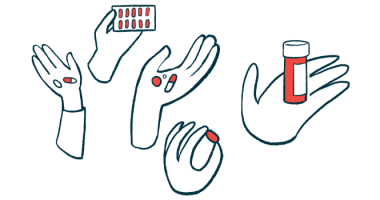Sarepta’s Gene Therapy Improves Muscle Function in 4 Boys with DMD, Phase 1/2 Trial Shows
by |

Sarepta Therapeutics‘ microdystrophin gene therapy enhanced dystrophin protein expression in the muscles of four boys with Duchenne muscular dystrophy (DMD) enrolled in a Phase 1/2 trial. More importantly, the gene therapy improved the boys’ functional performance.
“The encouraging results that we previously saw and reinforced in the fourth patient strengthen our resolve to rapidly move to a confirming trial and, assuming successful, to bring this therapy to the Duchenne community around the world with a sense of urgency,” Doug Ingram, Sarepta’s president and CEO, said in a press release.
Jerry Mendell, MD, of Nationwide Children’s Hospital where the trial is being conducted, presented the results at the 23rd International Congress of the World Muscle Society earlier this month in Mendoza, Argentina.
The gene therapy, called AAVrh74.MHCK7.micro-dystrophin, uses an adeno-associated virus, or AAV, to deliver microdystrophin, a shorter version of the dystrophin gene. Although shorter, the microdystrophin gene contains enough information to produce and restore the function of dystrophin.
Join our MD forums: an online community especially for patients with Muscular Atrophy.
The therapy, developed by researchers at the Nationwide Children’s Hospital and licensed by Sarepta, directs the delivery of the microdystrophin gene specifically to muscle tissue — while avoiding other tissues — in particular the heart muscle, which is vital since DMD patients frequently die from heart disease.
After addressing FDA concerns about raw materials used to make the therapy that placed it on hold, the Phase 1/2 clinical trial (NCT03375164) resumed in September and is currently ongoing.
Each participant receives a single dose of the gene therapy administered into the blood. To prevent their immune system from targeting and destroying the gene therapy, they also receive corticosteroids.
Data from the four boys showed that the microdystrophin gene was successfully delivered to muscle fibers. Muscle biopsies after the delivery of the gene therapy showed robust levels of the microdystrophin protein, with 81.2% of the fibers being positive for microdystrophin.
Almost all the muscle fibers in the fourth boy treated were positive for the microdystrophin protein (96.2%) and had a strong expression, 160% higher, of the protein.
All four boys also had a significant increase in the expression of various proteins associated with dystrophin, ensuring its proper function and collectively called the dystrophin-associated protein complex.
Their blood levels of creatine kinase — a marker of muscle inflammation — were decreased by more than 78% compared with the beginning of the trial (baseline). This result suggests that the amount of microdystrophin being produced is effectively protecting the muscle.
The participants showed improvements across all four functional parameters assessed in the trial — the North Star Ambulatory Assessment or NSAA (a 17-item rating scale that is used to measure functional motor abilities in ambulant children with DMD), time to rise, four-stair climb test, and the 100-meter timed test.
The average NSAA raw score improved 6.5 points from baseline, or on a linearized basis, 12 points of improvement were detected in the first 90 days.
No serious adverse events were reported. Three patients had elevated gamma-glutamyl transferase (GGT), a marker of liver damage, but the levels were back to normal within a week after increasing the dose of steroids.
“The goal of this study was to validate what we observed in pre-clinical models. We observed efficient transduction [delivery] of our vector, AAVrh74, to all muscle types; robust expression in skeletal muscles via the MHCK7 promoter [part of the gene therapy, it directs the expression of the microdystrophin gene to the muscles]; a reduction in creatine kinase levels; and a favorable safety profile,” Mendell said.
“ Similar to pre-clinical models, we also observed in this early study that robust expression has the potential to positively impact the natural course of disease progression,” he added.
“These results create for us an obligation to patients around the globe living with and being damaged by this cruel disease. We are investing our energy, resources and creativity to moving the development forward, planning meetings with the FDA and other agencies around the world to take their input, building a compelling access and reimbursement package, and establishing sufficient manufacturing capacity to fully serve the community if our program is successful,” Ingram said.







